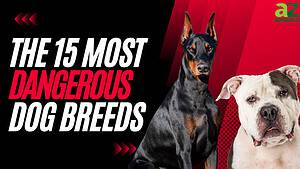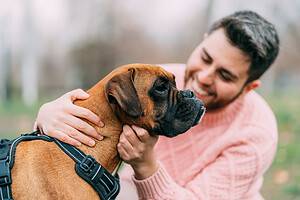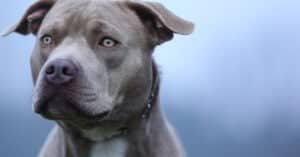American Pit Bull Terriers are purebred dogs, versus Pitskies who are mixed breeds–half Pit Bull and half Siberian Husky.
The differences between these dogs come from the Pitsky’s Husky lineage. Pitskies therefore might be more active, stubborn, and vocal. They may have longer coats and be taller than purebred Pit Bulls.
However, it’s also important to keep in mind that a Pitsky will inherit traits at random from each parent. Therefore, their looks and temperament aren’t easy to predict. A Pitsky might look and act just like a Pit Bull or just like a Siberian Husky. Most dogs will have a mix of traits from each breed.
That said, let’s dive into the differences between the Pit Bull and Pitsky to learn more about these strong, athletic pups!
Pit Bull vs Pitsky: A Comparison
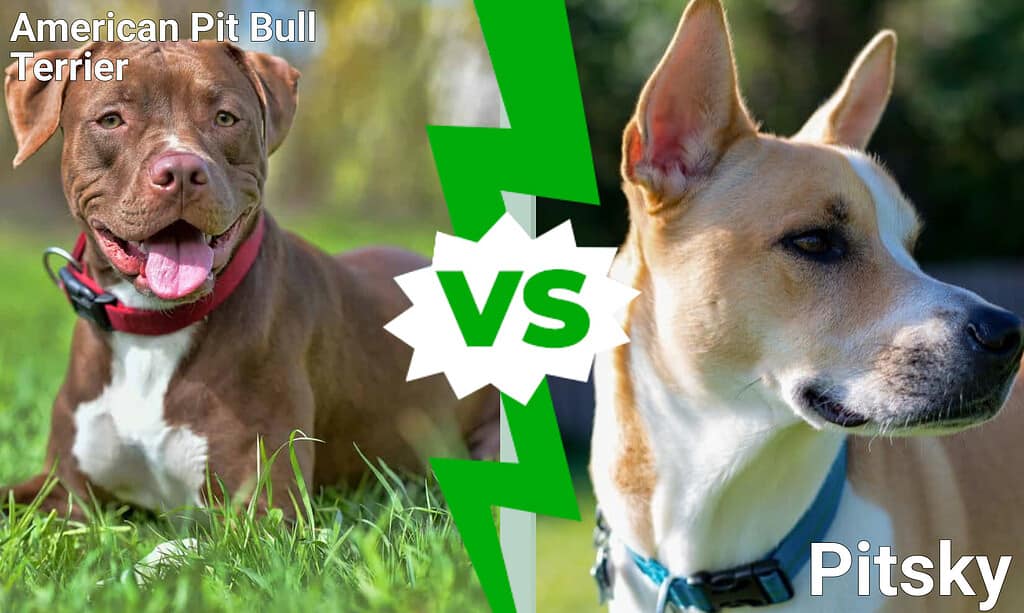
| Key Differences | American Pit Bull Terrier | Pitsky |
| Height | 17-21 inches | 17-23.5 inches |
| Weight | 30-60 pounds | 30-60 pounds |
| Coat | Short coat in any color | Short to mid-length coat in any color |
| Temperament | Affectionate, friendly, playful, active, and sometimes dog aggressive | Affectionate, friendly, playful, active, vocal |
| Exercise Needs | High | Very high |
| Trainability | Easy | Intermediate |
| Life Expectancy | 12-14 years | 12-14 years |
| Health Problems | Prone to hip dysplasia, thyroid disease, allergies, skin problems | Prone to hip dysplasia, thyroid disease, allergies, skin problems, eye problems |
Key Differences Between Pit Bulls and Pitskies
The six key differences between Pit Bulls and Pitskies are their height, appearance, coat, temperament, exercise needs, and trainability.
Pitskies may be taller and have longer coats if they take after their Husky parents. They may also be more stubborn, vocal, and dog-friendly. American Pit Bull Terriers are high-energy dogs, but Huskies are on another level. A Pitsky might also have more energy than a Pit Bull if they inherit their Husky parent’s drive to work.
Keep reading to learn more about the differences between these dogs!
Appearance
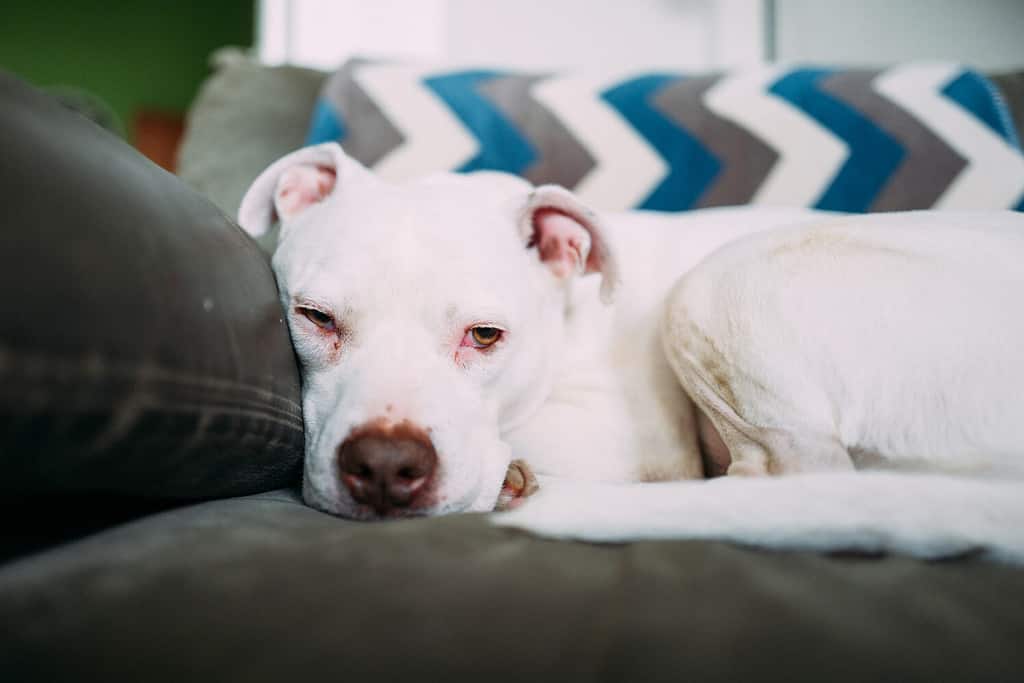
Pit Bulls are often shorter and stockier than Piskies.
©Veronica Varos/Shutterstock.com
Pit Bulls are short, stocky dogs. Pitskies who take after their Husky parents will be taller, and have less boxy frames. Both dogs are muscular and have long snouts.
Naturally, both Pitskies and Pit Bulls will have long tails. Many people, unfortunately, dock their Pit Bull’s tails, which is an inhumane practice. Docking does little to no good for the dog and hurts them physically and socially.
While some argue it decreases their risk of tail injuries, the American Veterinary Medical Association notes that tail injuries are exceedingly rare–and that 500 dogs would need to have their tails docked to prevent a single injury.
AVMA is also against ear cropping, which is common in Pit Bulls and sometimes in Pitskies. This procedure also has a painful recovery, negatively impacts a dog’s ability to communicate with others, and is done for purely aesthetic reasons.
While Husky’s ears stand upright naturally (and thus Pitskies’ may as well), Pit Bulls have naturally floppy ears.
Height
American Pit Bull Terriers stand 17-21 inches at the shoulder. Meanwhile, Huskies stand taller at 20-23.5 inches. Pitskies may take after either parent, so they will fall somewhere in that 17-23.5 inch range–but will be taller than Pit Bulls on average.
Weight
Both of these dogs have weights ranging from 30-60 pounds, but Piskies will likely weigh slightly more than purebred American Pit Bull Terriers. This is because Huskies tend to be a bit heavier than Pitties.
Coat
Pit Bulls have short coats that, according to the UKC breed standard, can be any color except merle or albino. Meanwhile, the AKC accepts the following Husky coat colors:
- Agouti and white
- Black and white
- Gray and white
- Red and white
- Sable and white
- White
- Brown and white
- Black, tan, and white
- Black
Pitskies may have these coat colors, any of the wide variety of colors seen in Pits, or even a mixture of colors from each parent.
Because Huskies have thick double coats, Pitskies are also likely to have thicker and longer fur than Pit Bulls–though this won’t always be the case. Fur length and color may vary even in the same litter.
Characteristics
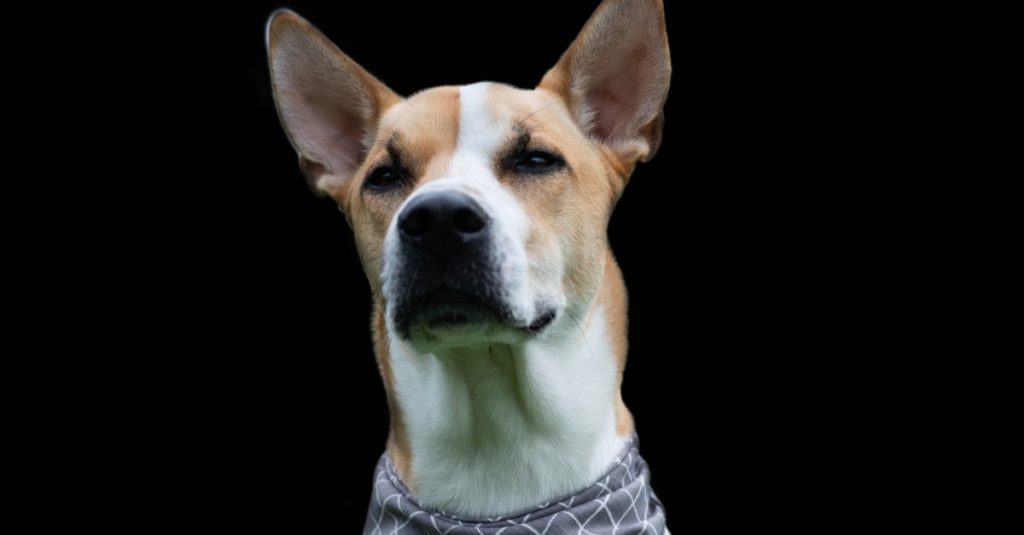
As a mixed breed, Pitskies are very similar to Pit Bulls but also have Husky traits.
©AllisonJ7/Shutterstock.com
Temperament
As a mixed breed, a Pitsky will take traits at random from both parent breeds. Their temperaments are a little less predictable than those of purebred dogs–but even with purebreds, it’s important to remember that each dog is an individual and may vary from the norm.
Although Siberian Huskies and American Pit Bull Terriers have very different perceptions, they’re actually quite similar!
Both are friendly, playful, and family-oriented. The UKC notes that Pit Bulls shouldn’t be vicious toward humans–this is uncharacteristic of the breed and indicates poor breeding, poor treatment, or perhaps both.
However, Pitties often don’t do well with other dogs. Huskies were bred to pull sleds in packs, so they get along much better–and a Pitsky could take after either parent or fall somewhere in the middle.
Neither tend to make good guard dogs unless you’re simply looking for a big bark and the presence of a large dog to scare off would-be intruders.
Lastly, Pitskies will likely be much more vocal. While Pitties bark moderately, Huskies will not only bark but make several unique sound effects! This can be entertaining or annoying depending on your point of view.
Social needs
Both have strong prey drives and may not do well with smaller dogs, cats, or other small animals. In addition, both Pit Bulls and Pitskies may tend toward dog aggression.
Not all Pit Bulls are incapable of getting along with other dogs, especially of their same size, but dog aggression is fairly common in the breed. It’s less common in Huskies, but remember that Pitskies can take after either parent breed.
When it comes to human family members, both Pit Bulls and Pitskies tend to be very affectionate and loyal. They’re both known for being gentle with children but remember to never leave a dog and child unattended.
It’s also important to teach them both how to interact with one another. Teach children to be gentle, not to roughhouse with the dog, and to stay away from a dog’s food. Train dogs not to jump or roughhouse with kids, and always provide a quiet space to go where they won’t be bothered, such as their crate.
Exercise Needs
Pit Bulls need plenty of daily exercise, including walks and play. However, Huskies are on another level–they’re working dogs who were bred for endurance.
A Pitsky may take after either parent breed, or fall somewhere in the middle. Take cues from your individual dog, and talk with your vet about their exercise needs.
A bored Pitsky may become overly vocal, destructive, or depressed. Meanwhile, you’ll be able to tell they’re done with exercise if they slow down, pant heavily, or otherwise seem tired on a walk.
Trainability
American Pit Bull Terriers tend to be eager to please. They’re smart dogs who will pick up on new cues relatively quickly.
Meanwhile, Siberian Huskies are known for their stubbornness–and they can get quite vocal when they don’t want to listen! This smart breed also needs plenty of mental stimulation to keep them occupied.
A Pitsky, therefore, may be a breeze to train or might dig their heels in when you ask for something.
The key is patience and using force-free, science-based training methods. Avoid aversive tactics, as these will only harm your relationship with your dog.
Health Factors
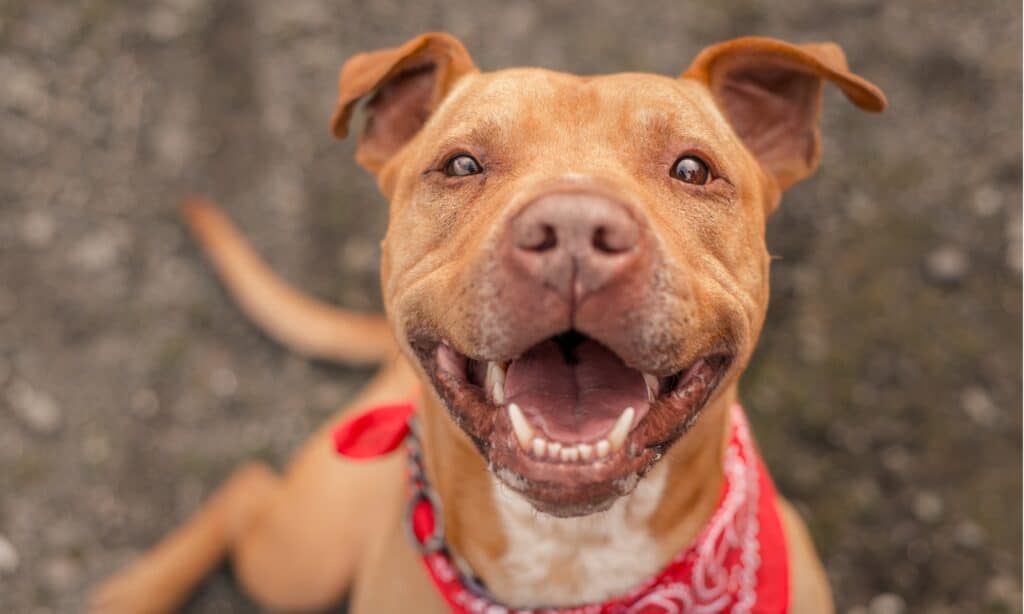
Both Pit Bulls and Pitskies have an average life expectancy of 12-14 years.
©iStock.com/Photography by Adri
Life Expectancy
Both Pit Bulls and Pitskies have a life expectancy of 12-14 years. Remember this is an average range, so it won’t be true of all dogs. Some will live shorter lives, others longer.
The best way to keep your dog healthy and increase their lifespan is to provide them with proper care. This means a quality, vet-recommended diet, daily exercise, and regular veterinary check-ups.
Breeding also plays a role in a dog’s lifespan. I highly recommend rescuing, since there are so many Pit Bulls and Pitty mixes in shelters right now–and mixed breeds are seldom ethically bred.
If you do choose to adopt a purebred Pit Bull from a breeder, ensure they’ve completed all recommended genetic health testing and have the results openly available.
Health Problems
Both Pit Bulls and Huskies are prone to hip dysplasia and thyroid disease, so a Pitsky may inherit these conditions from either parent.
American Pit Bull Terriers are prone to several skin conditions and have higher rates of allergies when compared to other breeds. They may also develop luxating patella, which is when the kneecap slips out of place. Of course, Pitskies can also develop these conditions if inherited from their Pit Bull parent.
Huskies are prone to several eye conditions, which Pitskies may inherit but are less common in Pit Bulls.
While both breeds are relatively healthy, it’s important that breeders complete health testing for genetic conditions.
Wrapping Up: Pit Bull vs Pitsky
In conclusion, most Piskies will have Husky traits that differentiate them from purebred Pit Bulls. Differences between Pit Bulls and Pitskies may include their height, vocalizations, and exercise needs. Pitskies often have naturally upright ears and thicker, denser coats than Pit Bulls.
Thank you for reading! If you have feedback on this post, please contact the AZ Animals editorial team.
The photo featured at the top of this post is ©
Ready to discover the top 10 cutest dog breeds in the entire world?
How about the fastest dogs, the largest dogs and those that are -- quite frankly -- just the kindest dogs on the planet? Each day, AZ Animals sends out lists just like this to our thousands of email subscribers. And the best part? It's FREE. Join today by entering your email below.
Thank you for reading! Have some feedback for us? Contact the AZ Animals editorial team.



